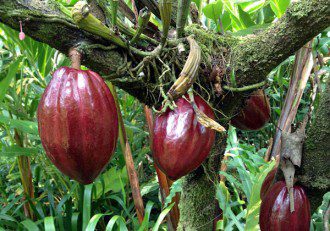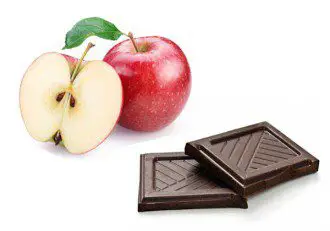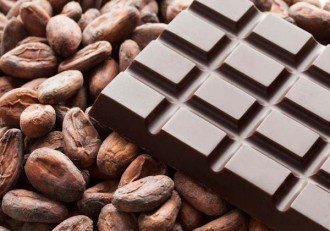Guest Writer for Wake Up World
Of all the treats available, chocolate is one of the most popular foods in the world. The first solid chocolate bar, made from cocoa butter, cocoa powder and sugar, was introduced by the British chocolate company J.S. Fry & Sons in 1847, but the history of chocolate goes back at least 4,000 years.1
Pre-Olmec cultures in Mexico produced chocolate as early as 1900 B.C. Originally, it was consumed as a bitter beverage. The cacao beans were fermented, roasted, and then ground into a paste that was mixed with water and spices like chili peppers and vanilla, sweetened with honey. Throughout its history, chocolate — “the food of the Gods” — has remained a symbol of luxury, wealth, and power. During the 14th century, the Aztecs and Mayans even used cacao beans as currency.
Research has also revealed chocolate has some rather impressive health benefits, provided you’re willing to give up the now-familiar sweetness of modern day milk chocolate.
The Olmecs, Mayans, and Aztecs valued cacao for its mood enhancing and aphrodisiac properties, and it was typically reserved for the ruling class. In the 17th century, cocoa and chocolate were considered potential medicine, and historical documents in Europe reveal they were used to treat angina and heart pain.2
Not All Chocolate Is Created Equal
Raw cacao is actually quite bitter, not sweet, due to the nearly 400 polyphenols that are present. When we’re referring to the health benefits of chocolate, this is the chocolate we’re referring to. Americans consume an estimated 12 pounds of chocolate per capita each year.3
Unfortunately, the vast majority of that is in the form of milk chocolate candy, which contains very minute amounts of healthy cacao, and loads of sugar. The milk added to milk chocolate can also interfere with your body’s ability to absorb the beneficial antioxidants (polyphenols) in the chocolate.
Chocolate Terminology
To get off on the right foot, it may be helpful to understand the distinction between cacao, cocoa, and chocolate:4
- Cacao: Refers to the plant, a small evergreen tree of the species Theobroma cacao, and its dried seeds, also known as cacao beans or cocoa beans, prior to processing.
 If you’re after health benefits, raw cacao nibs are what you’re looking for. Ideally, buy them whole and grind them yourself (a coffee grinder can be used for this) when using it in recipes.
If you’re after health benefits, raw cacao nibs are what you’re looking for. Ideally, buy them whole and grind them yourself (a coffee grinder can be used for this) when using it in recipes.
Alternatively, you can eat them whole, just like you’d eat conventional chocolate chips. A healthy amount would probably be around ½ to 1 ounce per day. I personally grind 1 tablespoon of raw cacao nibs twice a day and put them into my smoothies.
- Cocoa: Refers to the roasted cacao, ground into a powder from which most of the fat has been removed.
- Cocoa butter: The fat component of the cacao seed.
- Chocolate: The solid food or candy made from a preparation of roasted cacao seeds; if the cacao seeds are not roasted, then you have “raw chocolate.”
When selecting chocolate, look for higher cacao and lower sugar content. In general, the darker the chocolate, the higher the cacao content.
However, since cacao is bitter, the higher the percentage cacao, the more bitter it is (the polyphenols are what make the chocolate bitter, so manufacturers often remove them. But, it’s those polyphenols that are responsible for many of chocolate’s health benefits).
To counteract the bitterness, most chocolate is sweetened, so it’s a matter of balancing nutritional benefit with palatability. For health benefits, choose chocolate with a cacao percentage of about 70 or higher.
- “White chocolate” contains no cocoa at all; it’s just a health-zapping mix of pasteurized milk and sugar.
Cocoa Contains Hundreds of Health-Promoting Chemicals
Cacao’s benefits are related to naturally occurring compounds in the bean, including epicatechin (a flavonoid) and resveratrol, the former of which has both antioxidant and anti-inflammatory properties, and is thought to help shield your nerve cells from damage.
Resveratrol, a potent antioxidant, is known for its neuroprotective effects. It has the ability to cross your blood-brain barrier, which allows it to moderate inflammation in your central nervous system (CNS).
This is significant because CNS inflammation plays an important role in the development of neurodegenerative diseases.
Recent science also shows resveratrol is an exercise mimic and produces similar benefits as exercise to the mitochondria by stimulating AMPK and PKC-1alpha which increase mitochondrial biogenesis and mitophagy.
Norman Hollenberg, a professor of medicine at Harvard who has spent years studying the Kuna people of Panama (who consume up to 40 cups of cocoa a week), believes epicatechin is so important it should be considered a vitamin.5
The Kuna have less than a 10 percent risk of stroke, heart failure, cancer and diabetes, which are the most prevalent diseases ravaging the Western world.6
Indeed, many studies have confirmed that cacao can benefit your heart, blood vessels, brain, nervous system, and helps combat diabetes and other conditions rooted in inflammation.
- One 2012 meta-analysis7 found that eating chocolate could slash your risk of cardiovascular disease by 37 percent and your stroke risk by 29 percent.
- Another meta-analysis8 published that same year found that cocoa/chocolate lowered insulin resistance, reduced blood pressure, increased blood vessel elasticity, and slightly reduced LDL. In one study,9 patients consuming 100 grams of flavanol-rich dark chocolate for 15 days showed decreased insulin resistance.
- According to a paper10,11 published in the journal Oxidative Medicine and Cellular Longevity, cocoa polyphenols may have specific benefits for cardiovascular and inflammatory diseases, metabolic disorders, and cancer prevention. The authors note that:
“Cocoa contains about 380 known chemicals, 10 of which are psychoactive compounds … Cocoa has more phenolics and higher antioxidant capacity than green tea, black tea, or red wine … The phenolics from cocoa may … protect against diseases in which oxidative stress is implicated as a causal or contributing factor, such as cancer.They also have antiproliferative, antimutagenic, and chemoprotective effects, in addition to their anticariogenic effects.”
Chocolate and Human Health
A 2013 paper12 in the Netherlands Journal of Medicine also reviews the many health benefits of cacao, noting that many consider it a “complete food,” as it contains:
- Healthy fats
- Antioxidants
- Nitrogenous compounds, including proteins, methylxanthines theobromine, and caffeine (central nervous system stimulants, diuretics, and smooth muscle relaxants. Theobromine is the ingredient that can cause heartburn in some individuals; on the other hand, it also inhibits persistent cough by reducing vagus nerve activity13)
- Minerals, including potassium, phosphorus, copper, iron, zinc, and magnesium
- Valeric acid (which acts as a stress reducer despite the presence of stimulants)
The following table highlights the wide range of positive health benefits science suggests are conferred by the cocoa bean.14,15,16
| Anti-inflammatory17(including 17 percent reduction in C-reactive protein) | Anti-carcinogenic18 | Anti-thrombotic,19including improving endothelial function20 | Neuroprotective benefits and lowered Alzheimer’s risk21 |
| Anti-diabetic22 | Anti-obesity effects, possibly due to the polyphenols’ ability to suppress fatty acid synthesis while stimulating cell energy expenditure in the mitochondria23 | Cardioprotective,24including lowering blood pressure,25 improving lipid profile, and helping prevent atrial fibrillation26 | Improved liver function for those with cirrhosis27 |
| Improves skin condition, and protection against UV damage28 | Improves gastrointestinal flora29 | Reduces stress hormones | Protects vision,30 and reduces symptoms of glaucoma31 and diabetes-induced cataracts32 |
| Slows progression of periodontitis33 | Improves exercise endurance34 | May help extend lifespan35 | Protects against preeclampsia in pregnant women36 |
Processing Destroys Many Valuable Nutrients
As noted in the Oxidative Medicine and Cellular Longevity paper,37 the nutrients found in raw cacao are easily altered and destroyed through processing. The bitterness of raw cacao beans is due to their high concentration of polyphenols.
To some people, cacao is virtually inedible because of its bitterness. To make it more palatable, chocolate manufacturers decrease the polyphenol content, and as a result you can find products containing anywhere from 10 to 100 percent polyphenols.
In dried fresh cacao beans, the total polyphenol content is around 15 to 20 percent, whereas fermented, non-defatted beans contain just 5 percent. The reason for this is because the fermentation process reduces epicatechin and soluble polyphenol content by as much as 20 percent; anthocyanidins are removed altogether, and procyanidins are decreased by as much as 500 percent.
The phenolic content of cocoa also varies depending on its origin. For example, Costa Rican cocoa contains more than 16.5 milligrams (mg) of catechins per gram (g), whereas Jamaican cocoa contains less than 2.7 mg per gram.
 Apples May Boost Health Benefits of Dark Chocolate
Apples May Boost Health Benefits of Dark Chocolate
Many real foods, eaten as close to their natural state as possible, can be considered “superfoods.” This applies to dark chocolate as well. Interestingly, certain superfoods produce great synergy when combined,38 meaning the whole becomes greater than the sum of its parts. When eaten in combination, the two foods become even healthier than eating them separately, on their own.
Eating apples is associated with a lower risk of death from heart disease, an association thought to be related to their antioxidant flavonoid content,39 including the anti-inflammatory quercetin. As noted earlier, dark chocolate, which is rich in antioxidant catechins, has also been found to support heart health. When paired, dark chocolate and apples have been shown to break up blood clots, thereby reducing your risk of stroke.
There are a couple of caveats though. Since much of the antioxidant content of an apple is found in its peel, you’ll want to leave the peel on when you eat it. For this reason, look for organic apples, to avoid ingesting pesticides and other chemicals. For chocolate, the closer it is to its natural raw state, the higher its nutritional value, so look for higher cacao and lower sugar content. Your best bet is raw cacao nibs, if you can tolerate the bitterness.
Make Your Own Chocolate Treats
Based on the evidence, there’s little doubt that dark, minimally processed chocolate is a real superfood. Just don’t mistake your average chocolate bar or chocolate-covered candy for a health food! To reap the benefits, it likely needs to be at least 70 percent cacao. Better yet, opt for the raw cacao nibs. I eat about 1 ounce of raw nibs per day.
If you can’t tolerate the bitterness, use them to make your own chocolate treat, to which you can add some harmless sweeteners. In the video above, I demonstrate a recipe I created from scratch using high-quality ingredients. As you will see, there are no specific measurements, so go ahead and tweak it to your own taste.
As a base, I use raw cocoa butter and organic coconut oil. You could also use raw organic grass-fed butter in lieu of the cocoa butter. Keep in mind that these ingredients will cause the candy to melt at lower temperatures, so you will most likely need to keep it in the refrigerator to keep it from melting. Next, I add 1/8 of a cup of raw cocoa powder.
Alternatively, grind your raw cacao nibs. For sweetness, I add about 3 teaspoons of Lo-Han powder and some Stevia. Cinnamon powder, mint, vanilla and/or orange extracts can also be added for flavor.
Since the majority of these ingredients are healthy fats, and there’s no added sugar, this treat will not stimulate your insulin release like most commercial candy bars will, even those with higher cacao content. Hence you get the best of both worlds — a chocolate treat with plenty of health benefits and few if any detriments.
With Valentine’s Day fast approaching, you may want to experiment with making your own candy this year. Stores like Amazon and Michael’s sell all sorts of candy molds you can use for the occasion.
Article sources:
- 1, 3 History Channel February 13, 2014
- 2, 11, 37 Oxidative Medicine and Cellular Longevity 2012; 2012: 906252
- 4, 12, 15 Netherlands Journal of Medicine March 2013: 71(2); 63-68 (PDF)
- 5 Science Daily March 12, 2007
- 6 Circulation 2009 Mar 17;119(10):1433-41
- 7 BMJ 2011 Aug 26;343:d4488
- 8 Am J ClinNutr March 2012
- 9 Journal of Nutrition 2008 Sep;138(9):1671-6
- 10 Oxidative Medicine and Cellular Longevity 2012 Article ID 906252
- 13 FASEB Journal 2005 Feb;19(2):231-3
- 14 Greenmedinfo.com, Chocolate
- 16 Huffington Post March 28, 2012
- 17 Am J Clin Nutr. 2009 Nov;90(5):1144-50
- 18 BMC Complement Altern Med. 2010;10:61
- 19 Indian J Pharmacol. 2010 Dec;42(6):334-7
- 20 J Am Coll Nutr. 2004 Jun;23(3):197-204
- 21 Med Hypotheses. 2006;67(4):682-97
- 22 American Journal of Clinical Nutrition March 2005: 81(3); 541-542
- 23 Fitoterapia. 2009;80(5):255–262
- 24 Vascular Pharmacology 2015 Aug;71:11-5
- 25 BMJ 2012;344:e3657
- 26 Med Hypotheses. 2010 Jan 16. Epub 2010 Jan 16
- 27 Am J Clin Nutr. 2012 Sep;96(3):584-90
- 28 Journal of Nutrition 2006 Jun;136(6):1565-9
- 29 Am J Clin Nutr. 2011 Jan;93(1):62-72
- 30 NBC News August 8, 2011
- 31 Expert Opin Emerg Drugs. 2007 May;12(2):195-8
- 32 Exp Biol Med (Maywood). 2004 Jan;229(1):33-9
- 33 J Periodontol. 2009 Nov;80(11):1799-808
- 34 J Physiol. 2011 Sep 15;589(Pt 18):4615-31
- 35 Nutr Res. 2008 Jun;28(6):377-82
- 36Epidemiology. 2008 May;19(3):459-64
- 38 TIME March 12, 2015
- 39 Lancet. 1993 Oct 23;342(8878):1007-11.
Recommended articles by Dr. Joseph Mercola:
- Vaccine Failures Continue – The One Size Fits All Vaccination Schedule is Not Safe for Every Child
- Genetically Engineered Mosquitoes and Moths Ready to Spread Like Wildfire
- FDA Approves Genetically Engineered Salmon – Here’s What You Need To Know
- Scientific Review Shows Fluoridation Does Not Prevent Cavities
- Scientific Links Between Processed Foods and Depression
- The Aspartame End Game… and What’s Next
- The Surprising Ways in Which Fast Food and its Packaging Harms Your Health
- How Sugar Harms Your Brain Health and Drives Alzheimer’s Epidemic
- The Health Benefits of Intermittent Fasting
- Sleep Loss May Cause Brain Damage and Accelerate Onset of Alzheimer’s, Two New Studies Show
- Can a Hug a Day Keep Infection Away?
- The Fluoride Deception Continues as US Government Ignores Fluoride’s Role as an Endocrine Disruptor
- Magnesium: An Invisible Deficiency That Could Be Harming Your Health
About the author:
 Born and raised in the inner city of Chicago, IL, Dr. Joseph Mercola is an osteopathic physician trained in both traditional and natural medicine. Board-certified in family medicine, Dr. Mercola served as the chairman of the family medicine department at St. Alexius Medical Center for five years, and in 2012 was granted fellowship status by the American College of Nutrition (ACN).
Born and raised in the inner city of Chicago, IL, Dr. Joseph Mercola is an osteopathic physician trained in both traditional and natural medicine. Board-certified in family medicine, Dr. Mercola served as the chairman of the family medicine department at St. Alexius Medical Center for five years, and in 2012 was granted fellowship status by the American College of Nutrition (ACN).
While in practice in the late 80s, Dr. Mercola realized the drugs he was prescribing to chronically ill patients were not working. By the early 90s, he began exploring the world of natural medicine, and soon changed the way he practiced medicine.
In 1997 Dr. Mercola founded www.Mercola.com, which is now routinely among the top 10 health sites on the internet. His passion is to transform the traditional medical paradigm in the United States. “The existing medical establishment is responsible for killing and permanently injuring millions of Americans… You want practical health solutions without the hype, and that’s what I offer.”
Visit www.Mercola.com for more information, or read Dr. Mercola’s full bio and résumé here.

If you've ever found value in our articles, we'd greatly appreciate your support by purchasing Mindful Meditation Techniques for Kids - A Practical Guide for Adults to Empower Kids with the Gift of Inner Peace and Resilience for Life.
In the spirit of mindfulness, we encourage you to choose the paperback version. Delve into its pages away from screen glare and notifications, allowing yourself to fully immerse in the transformative practices within. The physical book enriches the learning process and serves as a tangible commitment to mindfulness, easily shared among family and friends.
Over the past few years, Wake Up World has faced significant online censorship, impacting our financial ability to stay online. Instead of soliciting donations, we're exploring win-win solutions with our readers to remain financially viable. Moving into book publishing, we hope to secure ongoing funds to continue our mission. With over 8,500 articles published in the past 13 years, we are committed to keeping our content free and accessible to everyone, without resorting to a paywall.







